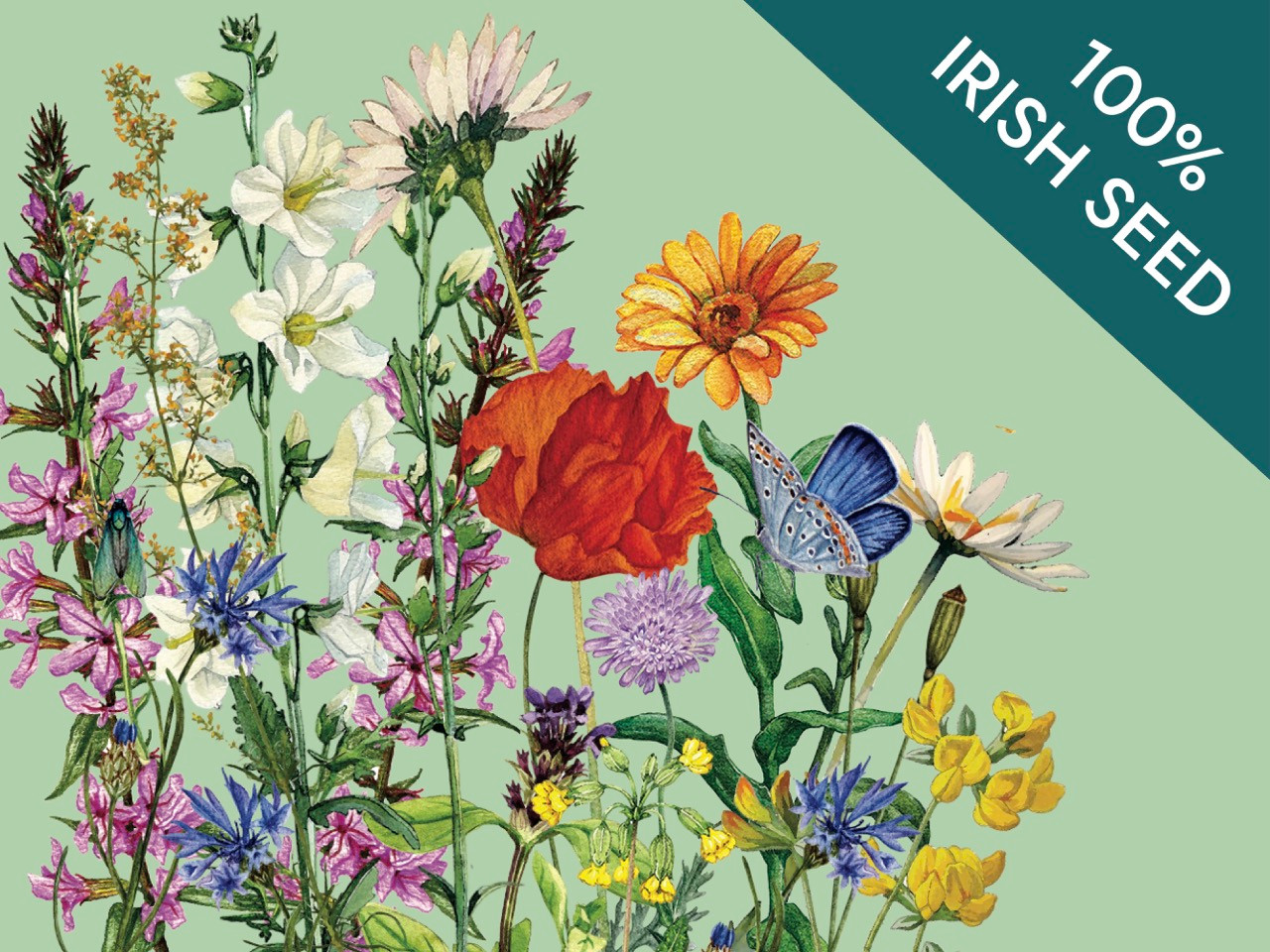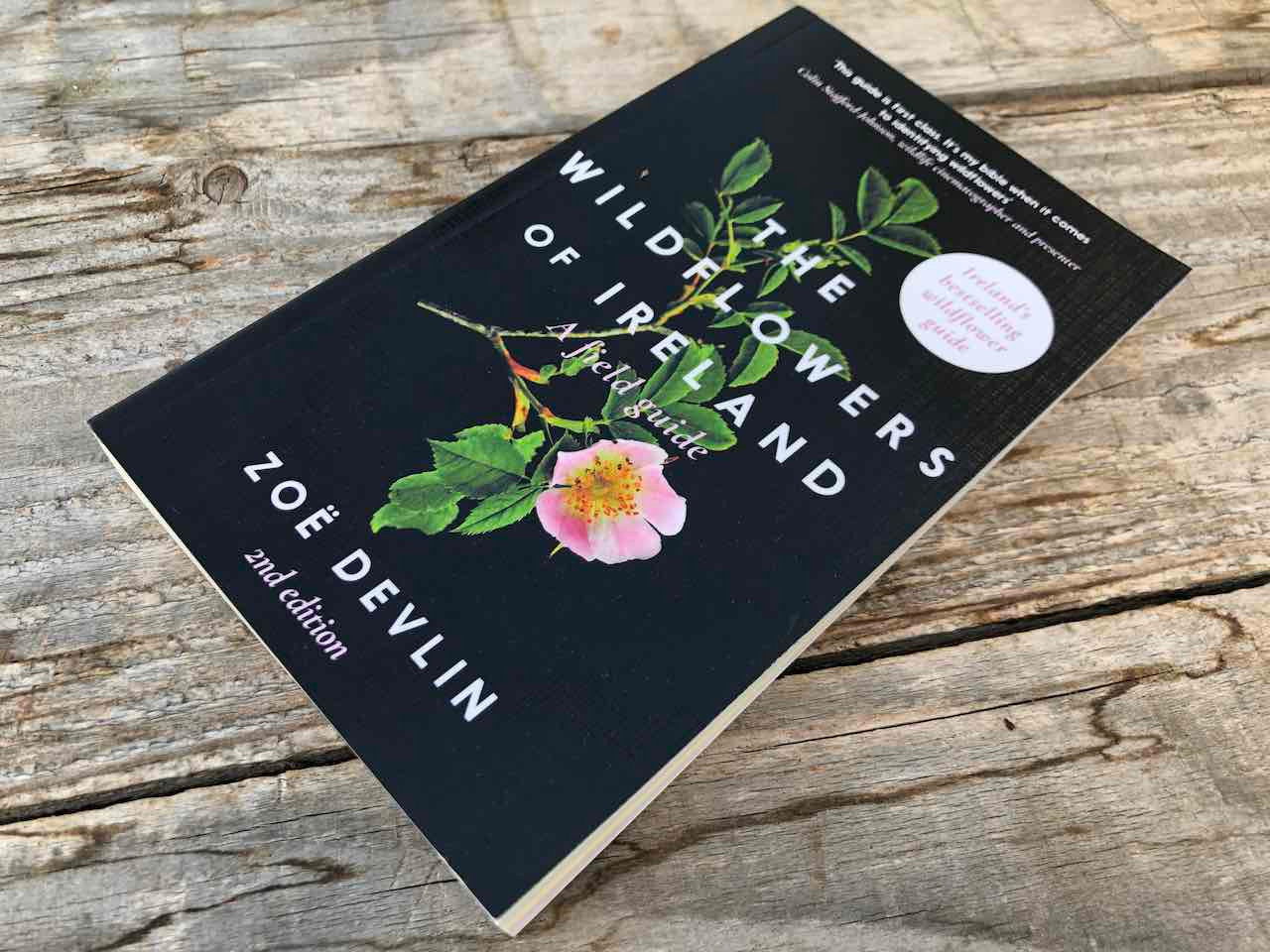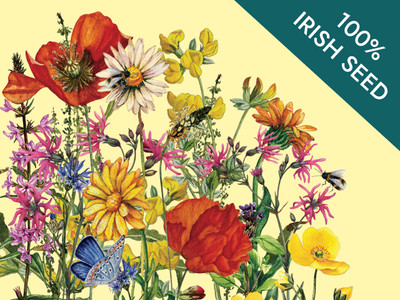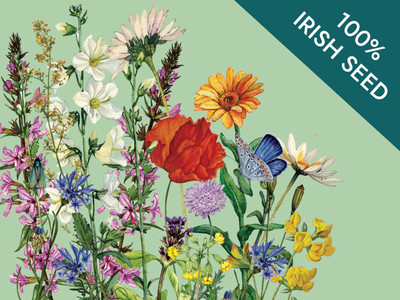Why Sow Wildflowers?

What are the main benefits of sowing wildflowers in your outdoor space or of creating a wildflower meadow? First of all, it's best to go for a 100% native Irish wildflower mix, as non-native wildflowers can end up doing more harm than intended, out-competing our native species and having knock-on effects on wildlife.
If sown carefully, however - with attention paid to suppliers, source, included species etc - wildflowers can be beneficial for the ecosystem in a number of ways.
The Benefits of Sowing Wildflowers
- Restoring Biodiversity and Supporting Wildlife
- Attracting Pollinators
- Soil Health
- Carbon Sink Potential
- Less Lawn Mowing Required
- Visual Appeal
- Educational Opportunities

Native Irish Grown Wildflowers - Traditional Irish Meadow
View ProductRestoring Biodiversity and Supporting Wildlife
There has been a concerning loss of wildlife habitat in Ireland in recent decades, whether because of intensive agricultural practices, urbanisation or careless destruction of hedgerow.
Wildflower areas, whether large or small, can help reverse this worrying trend by providing both habitat and food sources. Native wildflower meadows attract insects, which then serve as a rich food source for birds; while plants like thistles and teasels provide seeds for species such as goldfinches and linnets.

Additionally, these meadows can offer cover and nesting sites for animals like hedgehogs, shrews, and frogs, contributing to a more balanced ecosystem.
They are Pollinator Friendly
Pollinators - such as bees, butterflies, and hoverflies - play a crucial role in the health of our ecosystem. An estimated 35% of global food production is dependent on pollinators. However, habitat loss, dwindling food sources and pesticide use have put these beneficial insects under threat.
By planting native wildflowers, you provide pollinators with a preferred food source. Native species are particularly well-suited as they (plants and insects) have evolved alongside each other over thousands of years.

Native Irish Grown Wildflowers - Cottage Garden
View ProductA diverse range of wildflower species coming into bloom at different times of the year is ideal for bees, some of whom will be searching for nectar from early spring and others needing it later in autumn.

The Great Yellow Bumblebee, for example, relies on species-rich meadow or grassland, much of which has been lost to the point where the species is on the endangered list. Native wildflowers such as Common Knapweed and Kidney Vetch can provide a vital food source for this stunning bee species.
Protecting bees isn't just about the environment or the ecosystem - according to the Department of the Environment they are worth €53m a year to the economy!

Native Irish Grown Wildflowers - Easy Grow Mix
View ProductSoil Health
The deep roots of some wildflower plants can help improve soil structure, aerating the soil and allowing water to penetrate more effectively. This also prevents soil compaction.
Both deeply rooted and shallow rooted wildflowers can help counteract soil erosion and reduce runoff.

Some species of wildflower (such as clover or birds foot trefoil) can help fix nitrogen in the soil. As plant foliage breaks down over time, nutrients and organic matter are returned to the soil.
Carbon Sink Potential
Wildflower meadows have been shown to be remarkably effective at capturing carbon from the atmosphere and storing it in roots or in the soil. A wildflower meadow, for example, can store up to 6 tonnes of CO2 per hectare in a single year.
Carbon sinks are vital when it comes to fighting or mitigating climate change. Because the soil in a meadow is less likely to be disturbed or tilled, carbon is retained in the soil for long periods.
Less Lawn Mowing Required!
By replacing a conventional lawn with a small wildflower meadow or display, you will be reducing the amount of work that is involved in maintaining a neat lawn. Reducing mowing decreases fuel or electricity consumption for lawnmowers, leading to lower carbon emissions and reduced noise pollution.

Wildflower meadows do require a certain amount of maintenance: this can involve cutting once a year or cutting two or three times a year, depending on the seed mixture, the site or personal preference. However, once they have established they require minimal intervention.
Enhance the Natural Beauty of Your Surroundings
A wildflower meadow is a rich and ever-changing landscape. The variety of species bring seasonal colour and diversity, adding character to outdoor spaces. They will also attract a range of beautiful visitors such as butterflies and other pollinating insects.
Provide An Educational Opportunity
A wildflower meadow can be a great educational resource, whether in a school or home setting. It can illustrate the importance of biodiversity, native plants and pollinators.

Wildflowers (new edition) - Zoe Devlin
View ProductThe colour and variance of wildflower meadows is a great natural inspiration for drawing or art projects, while many wildflower species have historical resonance in terms of Irish folklore. Yarrow, for example, was said to keep someone safe when they were going on a journey:
'Pull 10 leaves of the yarrow and throw one leaf away. Put the 9 others in a white cloth and tie it with a string around your neck.
If this is done anyone that is going on a journey will return safe and won't have any accident or see any evil spirits. If going to a fair with an animal and having this around your neck, you are certain to sell the animal and get a good price. Or if buying an animal good luck always follow it'. (From the National Folklore Collection, University College Dublin, https://www.ucd.ie/irishfolklore/en/)

Citations: Devlin, Zoe. Wildflowers of Ireland. https://www.wildflowersofireland.net/




